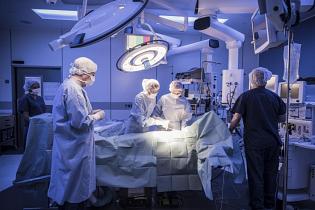Death on the Operating Table: How Patients Can Protect Themselves
According to a recent study by Johns Hopkins, medical mistakes lead to the death of more than 250,000 people in the United States yearly, this figure, exceeds the U.S. Centers for Disease Control and Prevention’s (CDC’s) third leading cause of death — respiratory disease, which kills close to 150,000 people per year. Some other studies would claim the number of yearly deaths caused by medical mistakes is as much as 440, 000.
CNBC.com asserts that the reason for this discrepancy in figures is that physicians, funeral directors, coroners and medical examiners rarely note on death certificates the human errors and system failures involved. Yet death certificates are what the Centers for Disease Control and Prevention rely on to post statistics for deaths nationwide.
Dr. Martin Makary, surgical oncologist and chief of the Johns Hopkins Islet Transplant Centerwho led the John Hopkins study defines a death due to medical error as one that is caused by inadequately skilled staff, error in judgment or care, a system defect or a preventable adverse effect. This includes computer breakdowns, mix-ups with the doses or types of medications administered to patients and surgical complications that go undiagnosed.
Doctors are humans who make mistakes, these blunders should be recorded ad used as lessons to forestall future deaths, but this is usually not the case. The system is not set up to record such mistakes. Presently the cause of death listed on the certificate has to correspond with an insurance billing code. Those codes do not sufficiently capture human error or system factors.
These incidents are too frequent and happen in all countries. In 2016, a German woman died on an operating table in London after blood meant for her was sent back due to an incorrect spelling of her name. "No matter the number, one incident is one too many," said Rick Pollack, president and CEO of the American Hospital Association.
Dr. Martin Makary, cited in CNBC.com, suggest ways patients can protect themselves from fatal human and system errors that could go wrong in the hospital.
Ask questions. Gain as much insight as you can from your health-care provider. Ask about the benefits, side effects and disadvantages of a recommended medication or procedure. Use social media to learn more about the patient's own condition, as well as those medications and procedures for which they were prescribed.
Seek a second opinion. If the situation warrants or if uncertainties exist, get a second opinion from another doctor: A good doctor will welcome confirmation of his diagnosis and resist any efforts to discourage the patient from learning more.
Bring along an advocate. Sometimes it's hard to process all the information by yourself. Bring a family member or a friend to your appointment — someone who can understand the information and suggestions given and ask questions.
Download an app. By having your medical information literally in the palm of your hand, you can work as a team with your doctor to cut your risk for medical errors. Health-care apps can be simple or complex, and depending on your age and condition, you can manage your well-being, medications and more.
Comments
There are 0 comments on this post













